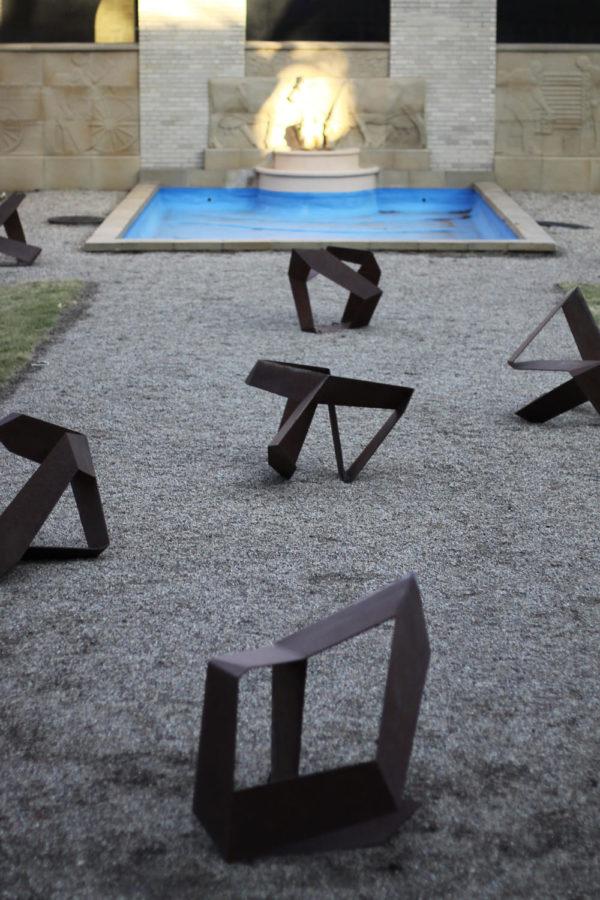Rashomon sculptures find temporary home at Iowa State
A total of 15 sculptures made out of bronze and steel can be found in the courtyard of the Food Sciences Building. The exhibit is part of Chuck Ginnever’s traveling collection, titled Rashomon after a Japanese film, which showcases a single storm from several different perspectives.
January 29, 2015
Iowa State University has the largest collection of public works of art. While wandering around campus, Chuck Ginnever’s Rashomon sculptures are among many that are on display.
The 15 sculptures made out of bronze and steel can be found in the courtyard of the Food Sciences building. These sculptures are not part of ISU’s permanent collection, unlike The History of Dairying fountain the sculptures are placed around.
The exhibit is part of Ginnever’s traveling collection around the world. The sculptures have been in place since Nov. 24, 2014 and will stay in the courtyard until Jul. 1, 2015. The steel sculptures are open to the public weekdays from 8 a.m. to 5 p.m.
Kate Greder, the exhibitions coordinator at University Museums, said the sculptures almost ended up here on accident.
“They were going to go back to the artist in Vermont,” Greder said. “Then a friend of a friend called University Museums and asked if we wanted it temporarily. Of course we wanted it, but we almost had to turn it down because of all the other projects we have going on.”
In the end, University Museums decided to accept the offer and have integrated the collection into some courses. According to Greder, a statistics course is taking the sculptures and trying to build models of them with a 3D printer. University Museums also plans on having its first Rashomon film showing Feb. 10 in the auditorium of the Food Sciences Building.
The title, Rashomon, comes from a Japanese film that showcases a single story from several different perspectives.
“The sculptures were titled Rashomon because the only rule in curating them is that you cannot have any sculpture placed alike,” Greder said.
Each of the 15 sculptures can be balanced 15 different ways. In the courtyard, the sculptures have to be staked in the ground to balance properly, but in an art gallery, each sculpture could balance on its own.
Ginnever has created multiple versions of Rashomon in several different sizes. The original, and the biggest, exhibit has been traveling the world since about 1993.
Ginnever has been known for his contemporary, large-scale, abstract sculptures, which have challenged visual perception for the past 50 years. University Museums hopes that when you stumble across these sculptures, it will help you think a little differently about the many ways each problem can be viewed and solved.















